Note: always waiting to test a pair of Echo Studio we re-publish the review of the most powerful speaker from Amazon which is on offer these days with a 13% discount at € 174.99.
It just arrived in our living room a few days ago and we can give a first judgment on the new smart speaker Echo Studio, top of the Amazon range that will give the competition a hard time for its power and versatility.
Here is the unboxing, the impressions of use and the expectations of a product with excellent performance and also a great potential that we can only partially tell you at the end of this page.
Because this is the first part a more complete review? We must say that it is difficult for the writer to publish a review without having thoroughly tested a product in all its facets: we do not have the anxiety of arriving first to have our say because many times there is a lot to work on just released products. by companies to register their software and firmware: in addition to this, the products also in the audio field depend more and more on a “smart” management of reproduction with DSP, environmental analysis and speaker controls that no longer depend only on physical conditions but also by computer control systems.
With a speaker like this Amazon Echo Studio, improvements are therefore possible in progress in the quality and accuracy of reproduction and response in the environment and, in addition, the originality of the configuration of the internal transducers implies for certain types of use also the use as a couple that we have not been able to experience at the moment.
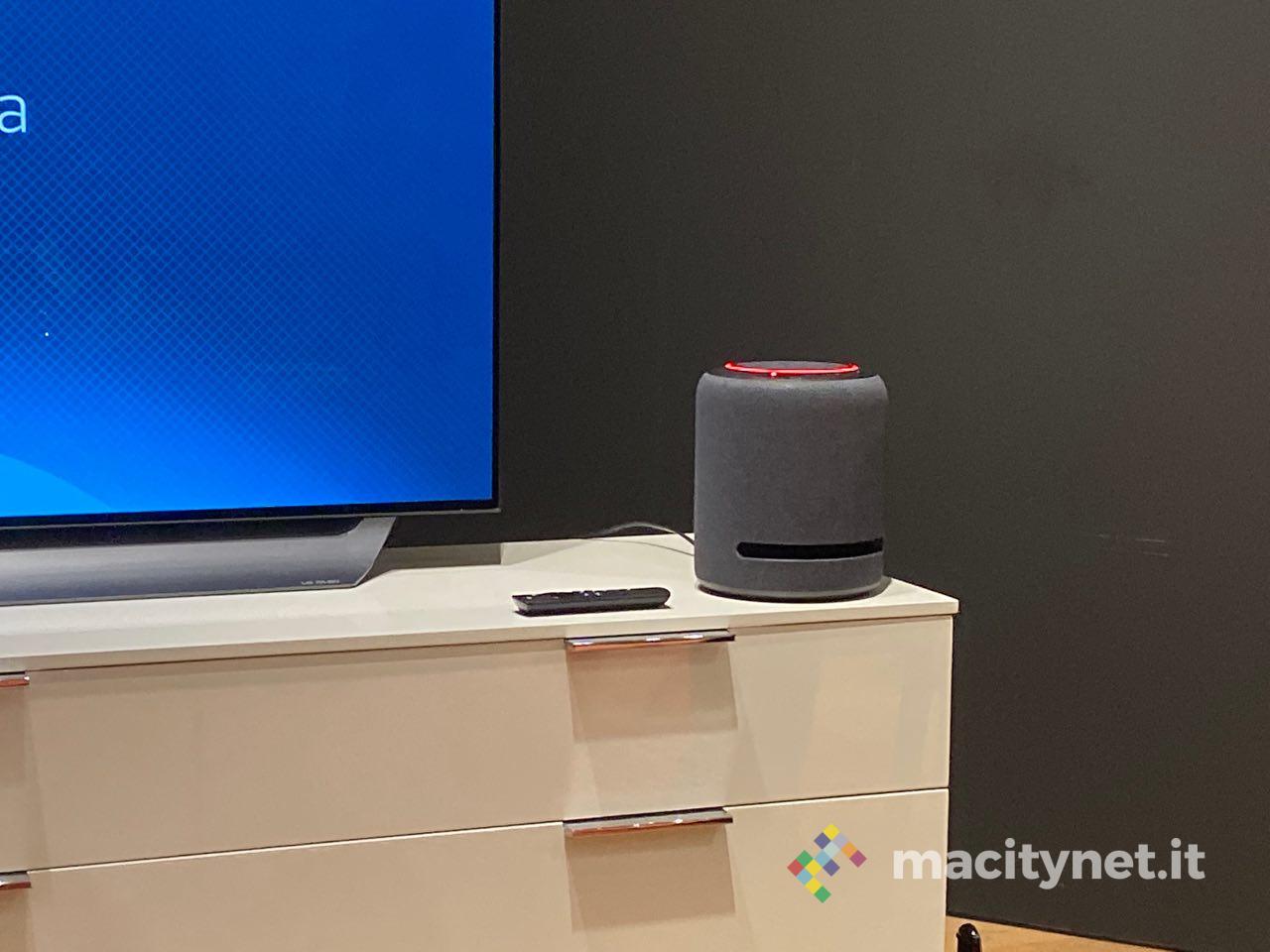
Finally there is another factor to take into consideration: many of the services for which this speaker was designed such as Amazon Music HD and 3D are not yet available in our country and we cannot give you any. account in this first phase.
So for the moment we will limit ourselves to evaluating many of the things that this speaker can do “alone” with its original Dolby Atmos single speaker configuration also for TV, with its power and ease of combination with other Amazon speakers (and Sonos equipped with Alexa) and with its ability to interact with Fire TV 4K and finally with its ability to connect in addition to home automation devices compatible via Wi-Fi with Alexa also with sensors , lamps and Zigbee sockets thanks to the included Hub.
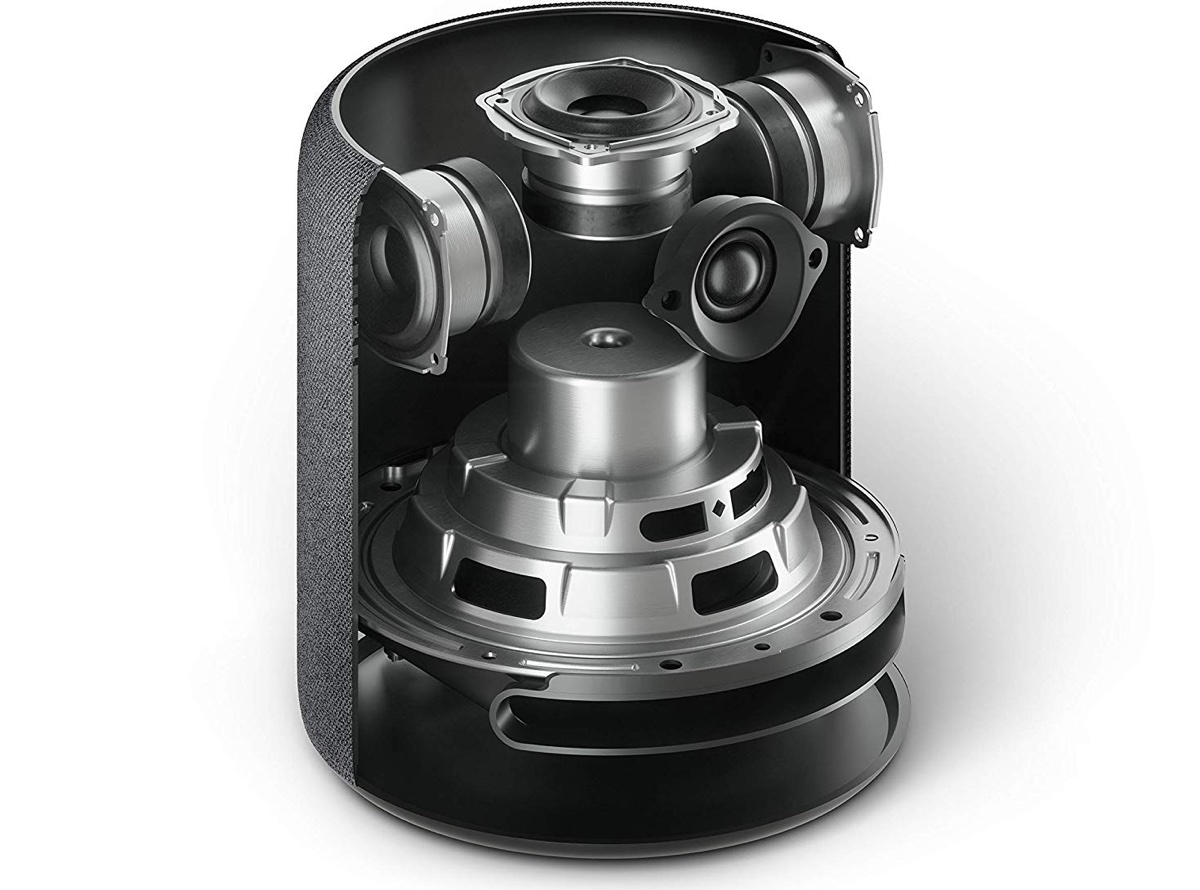
The packaging, unboxing and design
As we mentioned in the introduction, the speaker Amazon Echo studio arrived 10 days ago and, as we often do with systems of this kind, we made it play for several hours to “melt” or “run in” the transducers a little. . If you do not have an Amazon Alexa system already installed at home, the operation to be performed first is to activate an Alexa account and add the speaker as a peripheral to be assigned to a room: we explained the procedure in depth in the first review of the Echo “Italians” and it is always the same.
Here the package contains a convenient carrying bag in case you want to move the speaker from one room to another without damaging the fabric that surrounds the vertical wall of the cylinder (there is no gripping system in the casing and it is not advisable to insert the hand in the double opening of the subwoofer as the cone of the loudspeaker faces it.
As with the Sonos speakers (and not the other smaller Echo) there is no external power supply as the transformer is housed in the Studio chassis and it is sufficient to use a normal Philips “8” cable: this makes it more convenient. relocate the Studio to other rooms without having to access the sockets as it will be enough to leave a free cable for connection.
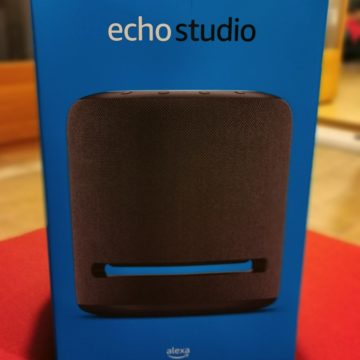 The packaging
The packaging 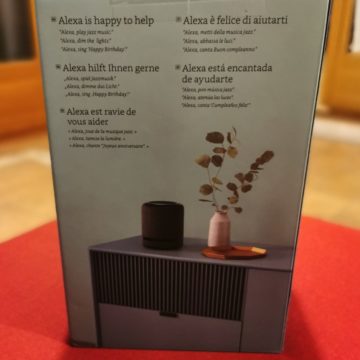 The back
The back 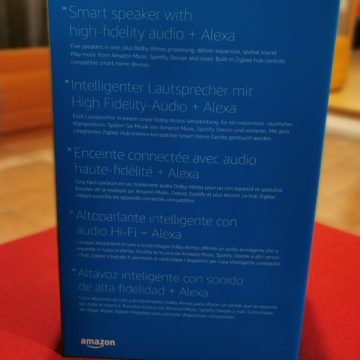 The capacities
The capacities 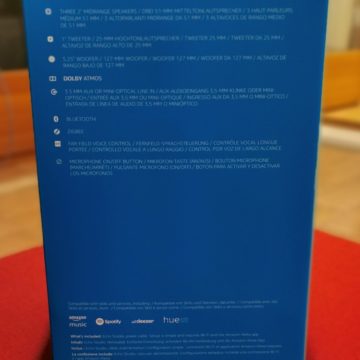 and compatibility information
and compatibility information 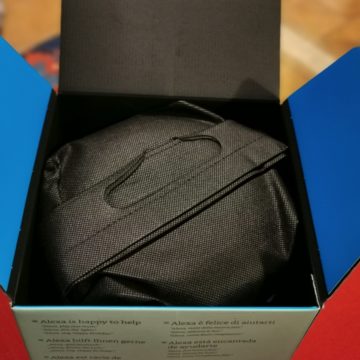 The box is also colored inside
The box is also colored inside 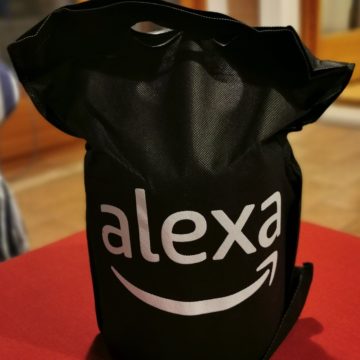 The protection and transport bag
The protection and transport bag 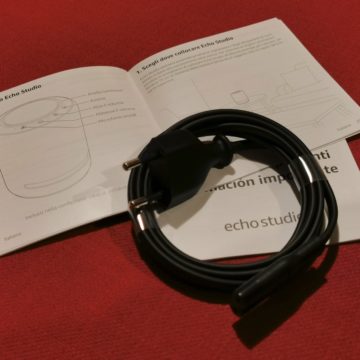 The standard cable will allow you to move it easily
The standard cable will allow you to move it easily 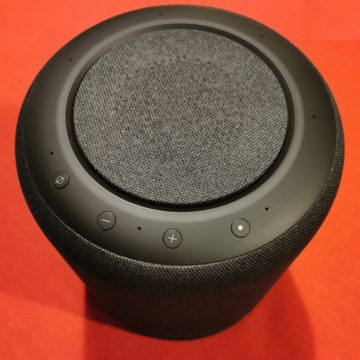 Buttons, led ring off and midrange seaker in the center
Buttons, led ring off and midrange seaker in the center 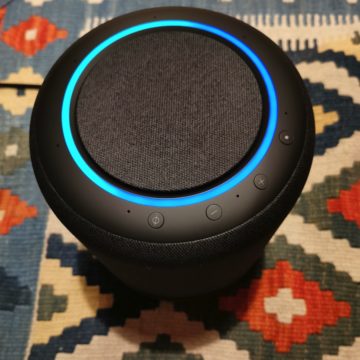 The ring can communicate both the sound level and the activation of alexa.
The ring can communicate both the sound level and the activation of alexa. 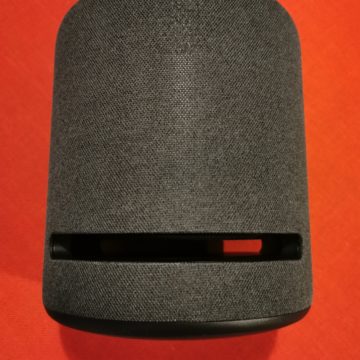 The original hole placement
The original hole placement 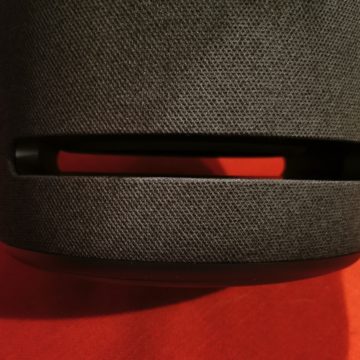 Detail
Detail 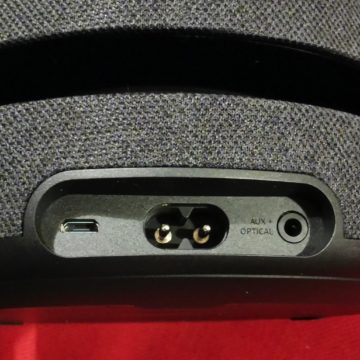 Micro USB for upgrades, power socket and analog and optical input
Micro USB for upgrades, power socket and analog and optical input 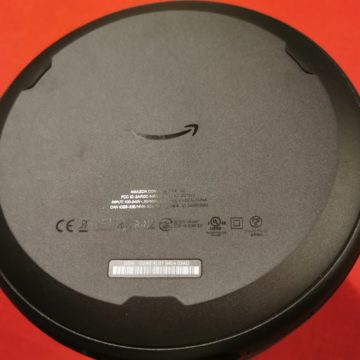 The bottom of the heavy and stable speaker
The bottom of the heavy and stable speaker 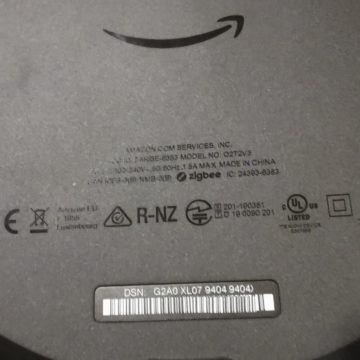 Trademarks and compatibility
Trademarks and compatibility 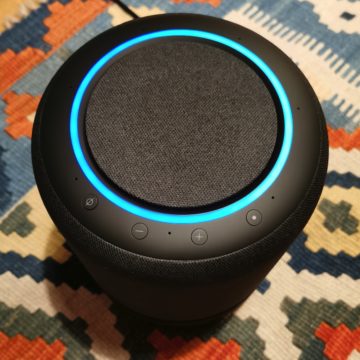 Ready for Alexa …
Ready for Alexa …
In addition to Sonos, the Echo studio has an analog + digital input for audio and a USB-Micro socket for updates or diagnostics while there is no Ethernet socket: all connections to the home network go through Wi-Fi.
Let's talk about the design obviously influenced by the number and position of the transducers: the hole on the lower part on the back and on the front is intended for the output of the low notes that are normally poorly directional while the tweeter is placed on the front accompanied by 3 speakers for the midrange. high, one to the right and one to the left and one facing upwards and around the latter we find the ring with all the controls and microphones completed by a multi-sector LED ring that communicates the various states of Echo Studio and works also as indicator of the volume levels.
The controls and the “non-smart” use
The volume adjustment can be done directly on the top as well as the deactivation of Alexa voice commands. Since, as we will analyze later, you can connect the speaker to a Fire TV stick we can or any source or TV with analog or digital output, we could disconnect all the “smart” part and think of it as a powerful amplification system that can be easily moved from room to room. A very interesting option for those who are fascinated by the product and fear for their privacy. Obviously, the app and the Wi-Fi connection are required for the configuration.
Below are the screens to add the speaker to an Alexa system and also connect it in Home Teather mode.
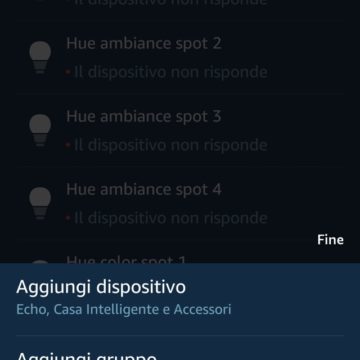
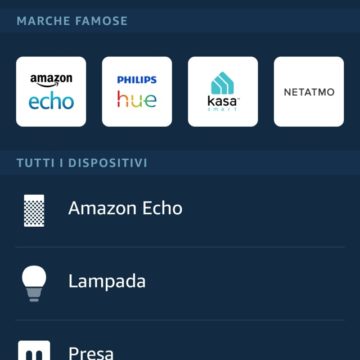
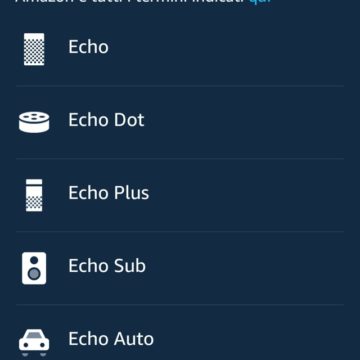
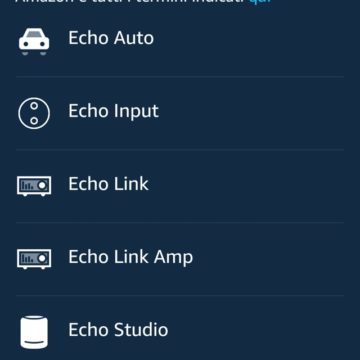
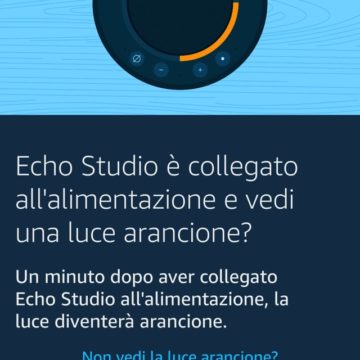

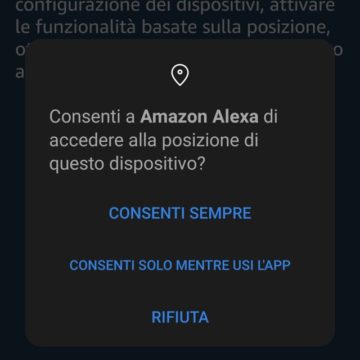
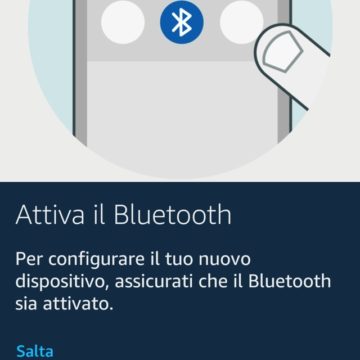


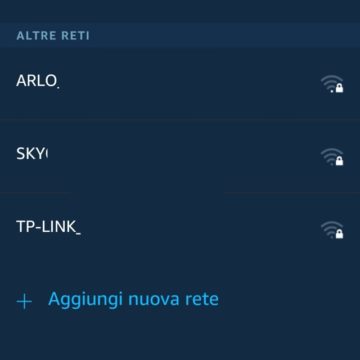

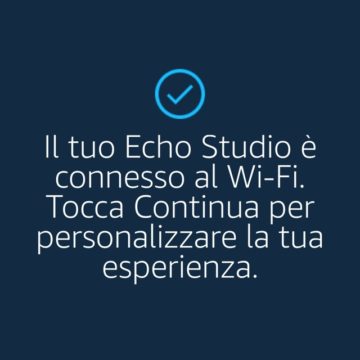

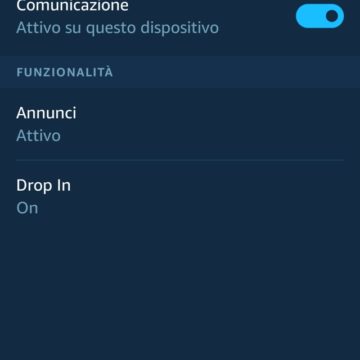
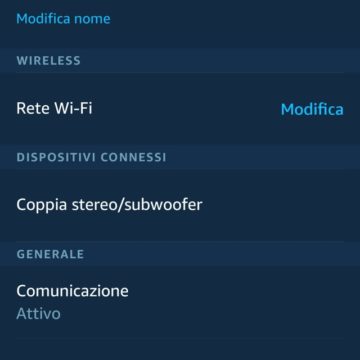

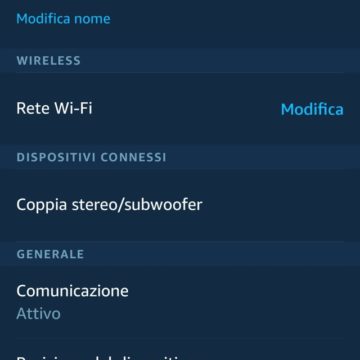
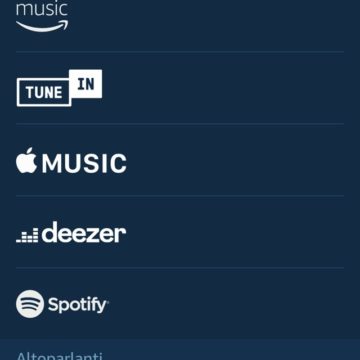

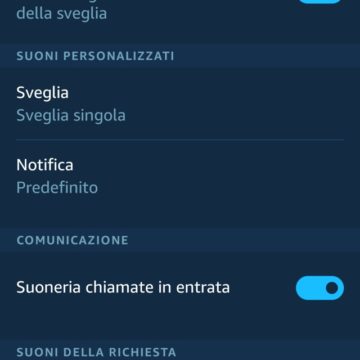
How does it sound compared to the competition?
We talked about the original configuration of the speakers and the dimensions but in the test we cannot help but compare this model with the others of Amazon and with its most direct competitors who among other things can use the voice commands of Alexa, those of Google and are compatible with Airplay two and that is the models Sonos Move and Sonos One , the first more for the size (but it also works on battery) and the second more for the price (it is smaller and has only two speakers) and finally comparing them with the Echo Plus model (which also has the Zigbee gateway and performance similar to the third generation Echo). Finally, we compared Apple's Homepod in single configuration so as not to miss anything.
We tested the 5 speakers obviously with the same songs both for listening to music and in combination with a TV (with Alexa's Home Teather mode and Fire TV Stick 4K and with the Airplay output of an Apple TV). And here are the results.
How does it sound with music?
We talked about the original speaker configuration: this greatly affects the listening experience, leaving, in the case of a single speaker, the reproduction of the environment at the intermediate part of the sound spectrum with results that are sometimes interesting and we will even say exciting and other times a a little unsettling as in some songs the directionality of the high notes of the tweeter leaves the presence of the singers a little behind. But let's get to the comparisons
Echo studio versus Sonos One: Sonos One's highs are definitely more defined and bass more precise, but Echo studio's larger sounding board and woofer placement offer a good presence in many songs and at frequencies that One can't get down to. . Mid-range balance is better on the Sonos One precisely because the entire sound spectrum is reflected in the same direction.
The Sonos Move maintains the same quality in the mid-highs and offers a wide bass response as the Echo Studio but with more control. In any case, it is a speaker that costs almost double. And in some tracks the deep, round bass of Echo Studio is undoubtedly appreciable.
In comparison with Homepod, the volume of Echo studio is felt on the lower notes and a greater balance on the averages for the speaker of Amazon. Echo studio also remains ahead in the “three-dimensional” reconstruction and general balance: listening to HomePod in comparison it seems that the latter has a sort of “veiling” while Studio is much more open and less “confused”.
Let's take into account that we are talking about single speakers that use, in the case of Echo Studio and Homepod, indirect sound systems with a tweeter matrix that of Apple and with 3 speakers for medium notes located around the tweeter for Echo Studio. The “environmental” reconstruction with a more or less 3D sound is the daughter of algorithms and the detection of the response in the environment: we must say that Echo studio is able to do better than Homepod in this, on the one hand because as we said previously. the reconstructed sound seems less confused and less veiled and on the other hand because the final power is certainly higher and we can fill a room without necessarily having to turn the volume up to the maximum.
Another thing we must remember is that Echo Studio like all its smaller brothers is able to reproduce an endless series of music streaming services and even if it does not reach the 100 of Sonos it has a good selection able to satisfy many users, even Apple. since for a few months you can listen to Apple Music and its radios as well as Amazon, Spotify, Tidal, Deezer, Pandora, SiriusXM, iHeartRadio and TuneIn.
3D Music where are you?
Amazon has given us a list of 3D tracks that should be remixed for Dolby Atmos or Sony 360 but we have no evidence of whether or not decoding is enabled in the archive's playback tags either. We must therefore trust our ears to reproduce songs as with Ariana Grande's 7 Diamonds (one of the songs indicated): to tell the truth a bit of “three-dimensionality” compared to front emission systems is heard but we do not know how much it depends on the geometry mid-range transducers that bounce some notes off the side walls and ceiling and real 3D speaker control. In any case, we must say that with a single speaker this broadens the sound front a little and introduces, at least in the songs tested, some appreciable or at least original effect.
Here we are waiting for a test with “certified” songs and perhaps a comparison with two different mixes of the same song.
Echo studio as an amplifier for TV and video
There is certainly no story here, especially if you have an Amazon Firestick 4K as a source. Thanks to the new Home Teather mode you could combine two Echo studios and play them together eliminating the need for a Dolby Atmos soundbar at least for equal effects. Obviously with a single Echo Studio it is impossible to test a width of field that would be obtained with a pair but we must say that by adding even a single speaker to an old Panasonic Plasma TV (to which Fire Stick TV 4K has given back its youth from the point interactivity view) all the contribution in depth of the bass, clarity of the dialogues and a minimum of effects obtainable with the single speaker thanks to the reflection on the walls adds involvement to a lot of content.
In these hours we are watching the fourth series of “The Man from the High Castle” and the soundtrack of both the action scenes and the more “meditative” ones that represent the journey of Giuliana's multi-verse acquire an excellent depth and presence.
It must also be said that the good range of bass and the original configuration of the mids can help in a “mixed” configuration that uses the optical or analogue input of Echo Studio : We use the TV speakers for the mid-high range and the analog and / or optical output of the TV to add bass and Echo Studio presence to reinforce the effects. Obviously it would have a space under or above the TV to place the Amazon speaker in the center of the screen
Echo studio as a line amplifier
One thing that many reviews have overlooked about the Echo Studio focusing on its streaming capabilities and wireless connection is that small hole for the jack socket positioned near the power socket: like the other Amazon, this one also does not mind being connected to an external source with a normal audio cable. We have experimented with it to give voice (and what a voice) to an 88-key weighted keyboard used for the study of the piano normally used with headphones and to an Expander Midi with stereo output for direct reproduction of many very particular sounds of sinth, bass electronic with “heavy” transients.
The 330-watt amplifier and a 24-bit DAC also work well with a well-sampled portable track player like the DodoCool DA 106 that we tested on these pages https://www.macitynet.it/recensione-dodocool -da106 /
Use Fire Stick TV 4K remote to control Echo Studio One of the interesting and new features that we have activated with the latest version of the FireStick TV 4 update is the combination of its remote control with voice control and Echo Studio: in practice you can ask Alexa in a whisper directly through the remote control, and not screaming. “Alexa” across the house, to play the latest news or play a playlist. In addition to this, the remote control can manage the overall volume of the tracks, pause them and start the playback of the next one.
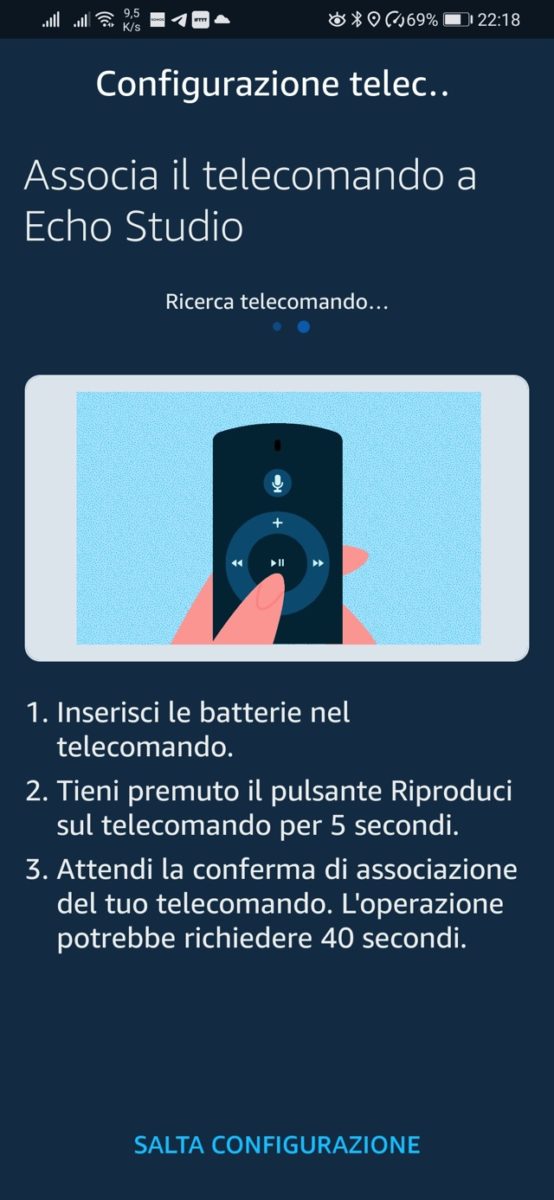
The Zigbee and Wi-Fi Home Automation Hub function
You probably already know that Amazon Alexa works as a bridge with web services and Wi-Fi devices that connect to the local network directly (lamps, sockets, etc.) or through an intermediate Hub such as Philips HUE, but Echo Studio, 10 “Echo Show and Echo Plus have one more feature: they are hubs or home automation gateways that allow the wireless connection of lamps, sockets and sensors (such as those of Osram without any other “mediation” device) allowing in fact to have a more local control system. immediate always managed by voice, automation and skills and direct connection to products such as Philips Hue, INNR, IKEA tadfri, Yeelight and Osram.
The addition of peripherals is similar to that of other home automation services but here it is directly under your local control without having to share passwords with third party services and this will allow you to save both costs and standby operation of the peripherals. Zigbee consumes less energy, allows you to create mesh networks and does not occupy places in the wi-fi of your home router: we refer you to our introduction to Zigbee to understand all the advantages.
With Alexa it is possible to turn up the thermostat before getting out of bed or to dim the lights from the sofa when you want to watch a movie, all using only your voice: this happens in two ways: or by using products that have a direct connection in Wi -Fi and bridges such as Hue that act as a bridge between wireless transmission technologies and Wi-Fi itself or with a direct Zigbee connection but only on a model that supports this technology: Echo Plus.
Home automation compatibility via Wi- Fi Alexa immediately works with a variety of compatible products that work with Wi-Fi such as lights, thermostats, smart sockets and switches from brands such as Philips Hue, IKEA, BTicino / Legrand, Netatmo, Honeywell, Netgear, TP-Link, Hive , Tado.
It is immediately possible to connect devices that work via Wi-Fi or with a Gateway based on Wi-Fi: we should authorize them for use with Alexa in order to provide the possibility of command via voice and assign them to a room.
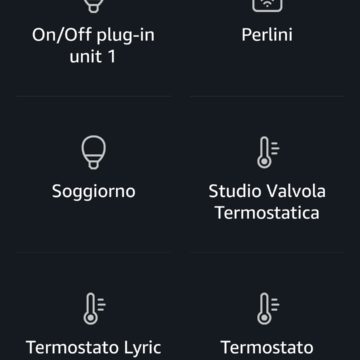 The devices home automation included: different brands under a single interface (including voice)
The devices home automation included: different brands under a single interface (including voice) 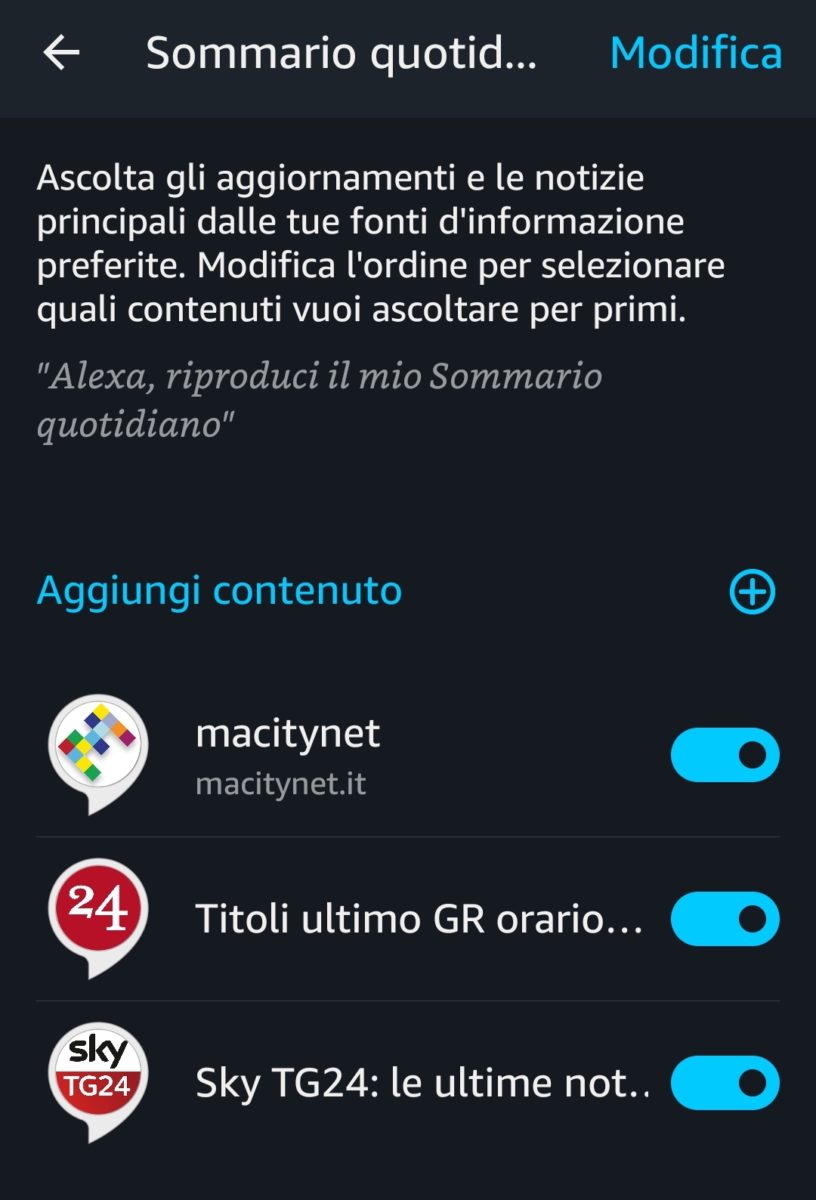 More areas of the house under control (and there is also the office than in another building)
More areas of the house under control (and there is also the office than in another building) 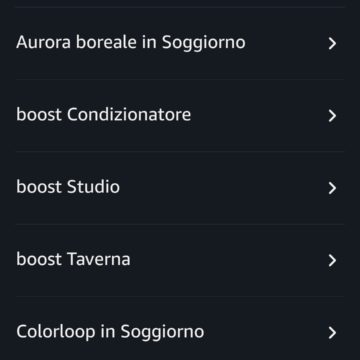 The scenes of Hue and those of tado ° can also be recalled directly on Echo Dot
The scenes of Hue and those of tado ° can also be recalled directly on Echo Dot
The routine scenes It is possible to use the powerful Routine function which allows you to automate a series of customizable actions using a single voice command of your choice: in other home automation systems they are called scenes or scenarios but different capacity. By saying “Alexa, goodnight”, Alexa will turn off the lights and play sounds that help you sleep: it is the combination of Skills with “traditional” home automation controls that makes the Alexa system very powerful.
You can create routines based on the time of day, for example, by setting a Routine where Alexa, every weekday at 6 am, and at 9 am on Saturday and Sunday, turns on the kitchen lights, starts the coffee machine and read the weather forecast. By adding Temperature and Motion Based Routines, Alexa activates when a room's temperature is too high or too low, or when motion is detected.
Third party skills
 Developers can use the Alexa Skill Kit (ASK) to develop skills. With thousands of skills available in Italy developed locally, it is possible to learn about GialloZafferano recipes, order a pizza on Just Eat, learn a definition from Treccani, listen to the latest TV programming from Super GuidaTv, see movie trailers with MyMovies, play with Akinator, listen to short stories for children from Giunti or test your knowledge with the De Agostini and Clementoni Skill, or find out the status of your train with Trenitalia.
Developers can use the Alexa Skill Kit (ASK) to develop skills. With thousands of skills available in Italy developed locally, it is possible to learn about GialloZafferano recipes, order a pizza on Just Eat, learn a definition from Treccani, listen to the latest TV programming from Super GuidaTv, see movie trailers with MyMovies, play with Akinator, listen to short stories for children from Giunti or test your knowledge with the De Agostini and Clementoni Skill, or find out the status of your train with Trenitalia.


Below you can see how the skill system combined with the home automation system works
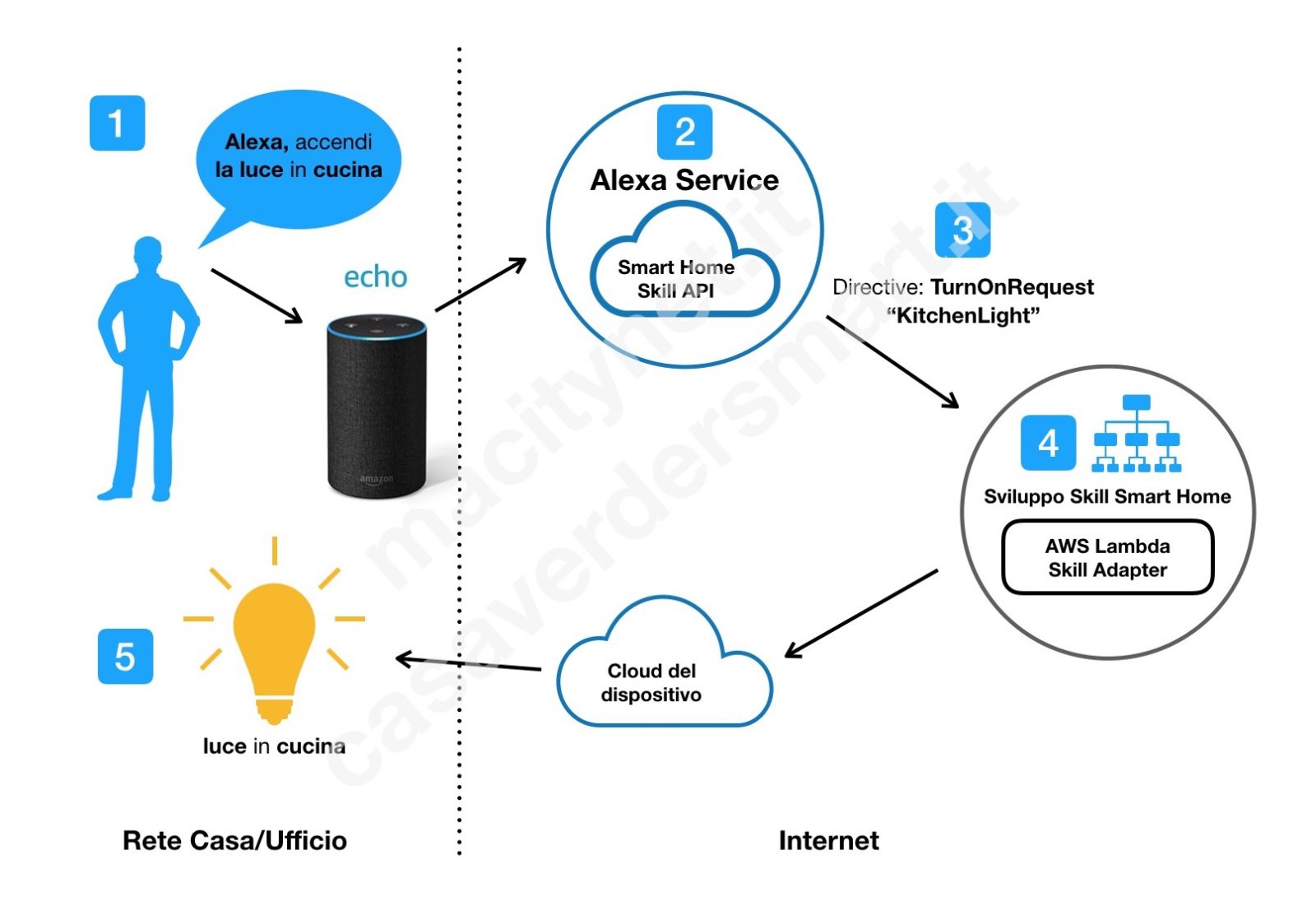
Conclusions
As you can read from our postilla, this review does not want and cannot end here but everything we have tried so far makes Echo Studio an extremely interesting and versatile speaker that those interested in a system with Alexa should consider as the very first option if they have no problems. of spatial collocation: the ability to fill the sound space, the 6 microphones and the ambient effect of Dolby Atmos together with the included Zigbee home automation hub can make it a very first choice for those who want to buy even a single speaker and the base of a system amplification of your TV paired with enormous potential.
The cost is absurdly low in comparison to the sound performance and the versatility of a speaker to be taken into consideration even if the smart functions are not your first purchase motivation.
Pro
Versus
Retail price
Amazon Echo studio is on sale in Italy at 199 Euro including VAT and with very long delivery times due to high demands. You can buy it from this Amazon page. If you have space at home, we absolutely recommend it over other Amazon Echos. Note: these days (end of July 2020) Echo studio is offered with a 13% discount at 174.99 Euro including VAT .
What we would like to try in the second part of the review. Surely in the second part of this test you will see the combination with a second Amazon Echo Studio to better define the sound front in stereo but also for a more engaging playback scene for movies and shows. We are waiting for the delivery of a second speaker in the next few days.
It would also be interesting to verify the ability to reproduce HD archives and their difference with standard tracks and finally access to remixed 3D tracks to understand how far the spatial definition capacity of these speakers can be pushed even with simple music tracks.
The last option not currently available on the international market and that we hope Amazon can offer in the future since it has already implemented its Home Teather Wireless management system is to also use Echo speakers or better Echo Plus as rear channels of a Surrround system: the technical possibilities are all there since the management of the wireless connection is standard and the environmental calibration could be managed directly from the internal microphones of each speaker: a system like this costing 600 Euros in total would give some twist to different soundbars on the market and be extremely flexible as a home teather system that can be “dismembered” at any time as a multiroom system.





